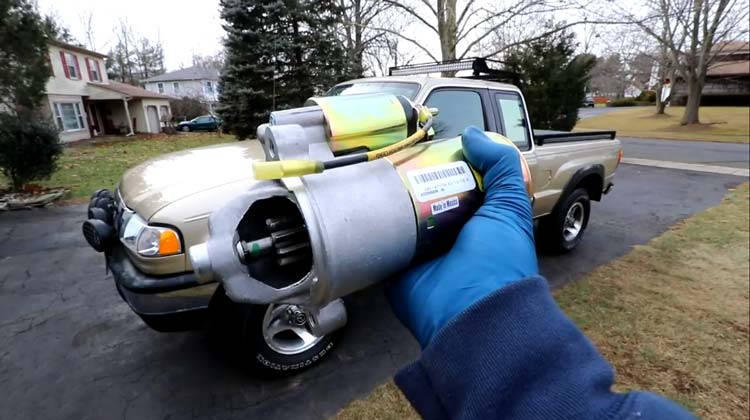If your car won’t start, the first thing you should do is check the battery. If it’s dead, charge it or replace it. If that doesn’t solve the problem, then you may have a faulty starter. Starter problems are common and can be expensive to fix, but in this guideline, I will discuss the symptoms of a faulty starter and how to replace it. I will also talk about the cost of replacement and how to reduce that cost. Keep reading for more information!
The Starter:
The starter is an electric motor that turns the engine over, starting the car. It is usually located on the side of the engine near the battery. The starter has a small gear that meshes with the flywheel to turn the engine over. When you turn the key, an electrical current is sent to the starter which turns the motor and starts the car.
Symptoms of a Faulty Starter: Depth And Detailed Discussion
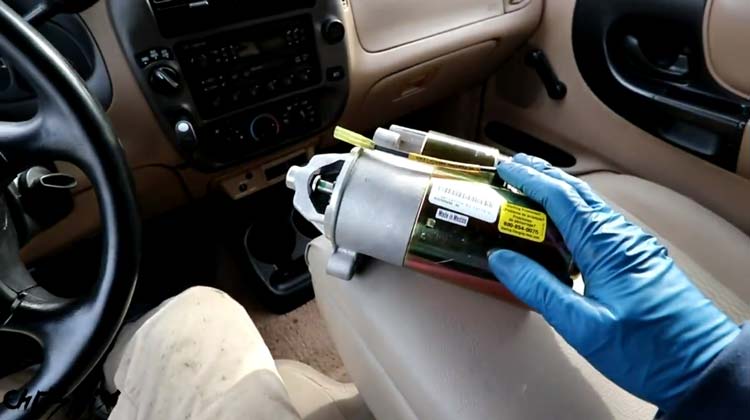
There are several symptoms that can indicate a starter problem. The most common symptom is when the car won’t start. This can be caused by a number of things, but if the battery is working and there is no clicking sound when you turn the key, then it’s likely the starter. Now I will discuss all the symptoms in detail:
The Car Won’t Start:
This is the most common symptom of a starter problem. If your car won’t start, and the battery is working, then it’s likely the starter. If you attempt to start your car and nothing happens, there is likely an issue with your starter. This is commonly caused by a burned-out starter relay or motor, but can also be due to an electrical problem.
However, please note that the problem may also be caused by a dead battery. If you experience this symptom, you need to contact an experienced mechanic to inspect the starter, ignition system, and other electrical components as it could be indicative of multiple issues.
Clicking Sound When Turning the Key:
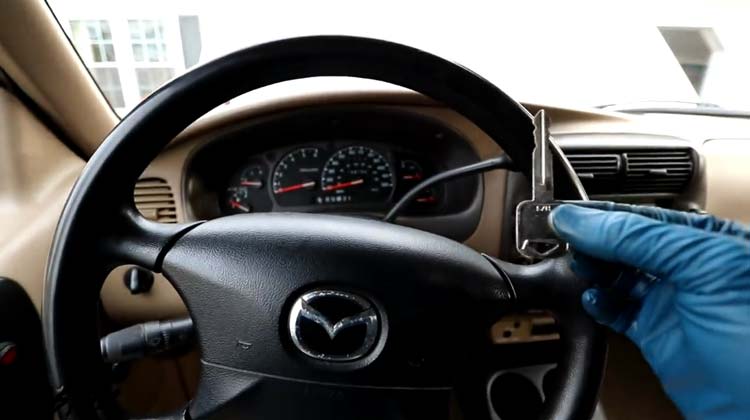
If you turn the key and hear a clicking sound, but the car doesn’t start, then it’s likely the starter. However, this problem could also be caused by a low battery or loose battery terminals. If you hear a clicking noise but the car still won’t start, then you need to have the starter inspected by a mechanic.
If your car is making a noise that you haven’t heard before when turning the key or pushing Start, you should pay attention. Any clicking, grinding, or whirring noise can indicate impending death for the starter.
When your starter components are damaged or not functioning properly, it will often produce a grinding noise similar to the one you would hear if you accidentally turned on the ignition after starting the engine. If this symptom is ignored, it could also cause damage to the engine flywheel.
Engine Cranks Slowly:
If the engine cranks slowly when you turn the key, it could be a sign of a weak battery or loose battery terminals. However, if the battery is working and the terminals are tight, then it’s likely the starter. A weak battery will need to be replaced, but if the starter is the problem, then it will need to be repaired or replaced.
Smoke or Burning Smell:
If you see smoke coming from under the hood or smell a burning odor, then it’s likely the starter. This problem is usually caused by a short circuit in the starter, which can overheat and damage the starter. If you see smoke or smell a burning odor, you need to have the car towed to a mechanic so they can inspect the starter and make the necessary repairs.
If your car doesn’t start, check to see if the starter is powered by electricity. If it is and you continue trying to start the car, you can cause system overload and overheat. When this happens, you will notice smoke coming from under the engine. The potential reasons for this could be a short circuit, ignition switch problem, or blown fuse. You should still reach out to a certified mechanic regardless as soon as you can.
Battery Issue:
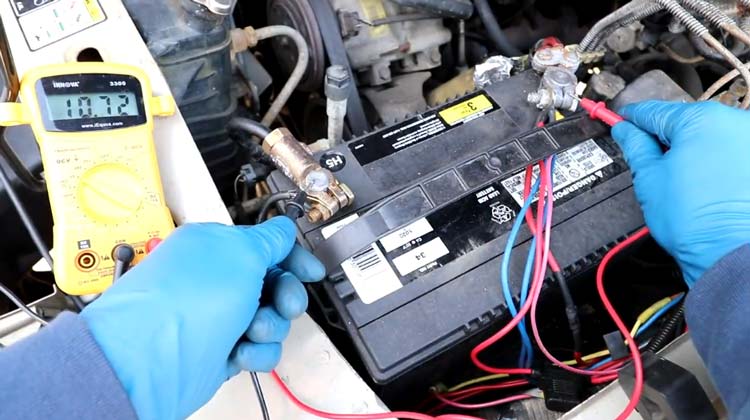
Although your dashboard lights are on and your headlights work, power to the starting system may not be the issue if the engine isn’t turning over. In fact, this is likely a problem with your battery because it takes a lot of power to crank an engine.
If your car won’t start, one possible way to check if it’s the battery is by starting it with a jumper or starter pack. If the engine starts when you do this, then it likely means that the battery is weak and needs to be replaced. This is especially common during winter.
Another way to test if the battery is the problem is by using a voltmeter. If the voltage of the battery is below 12 volts, then it needs to be replaced. If you’re still unsure about whether or not the battery is the issue, you can always take it to a mechanic or auto parts store and have them test it for free.
Bad Ignition Switch:
The ignition switch is responsible for sending power to the starter, so if it’s not working properly, then the car won’t start. This problem is often caused by a loose connection or a worn-out switch. If you suspect that the ignition switch is the problem, you need to have it inspected by a mechanic.
Starter Relay Issue:
The starter relay is responsible for sending power to the starter, so if it’s not working properly, then the car won’t start. This problem is often caused by a loose connection or a bad relay. If you suspect that the starter relay is the problem, you need to have it inspected by a mechanic.
Starter Replacement Cost:
The cost to replace a starter will vary depending on the make and model of your car. However, you can expect to pay between $200 and $400 for the parts and labor. If you have a warranty, then the cost may be covered.
If your starter is having problems, it’s important to take action right away. Ignoring the problem will only make it worse and could end up costing you more money in the long run. If you’re not sure what’s wrong with your car, take it to a mechanic so they can diagnose the problem and make the necessary repairs.
Replace a Faulty Starter:
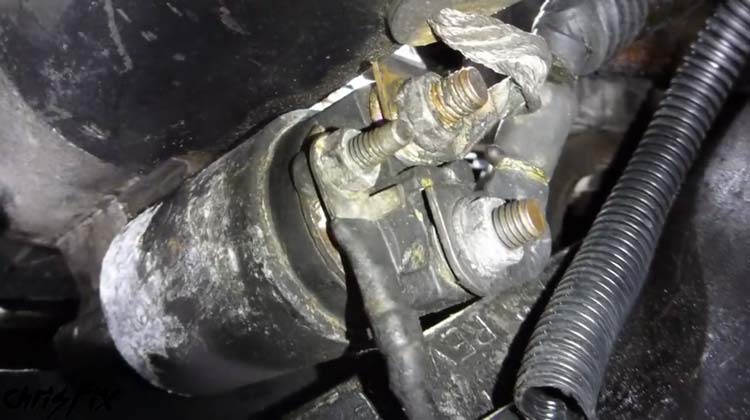
If your starter is having problems, it’s important to take action right away. Ignoring the problem will only make it worse and could end up costing you more money in the long run. If you’re not sure what’s wrong with your car, take it to a mechanic so they can diagnose the problem and make the necessary repairs.
Now I will tell you all the steps of how to replace a starter yourself. This includes what tools you will need, how to remove the old starter, and how to install the new starter.
Tools Needed:
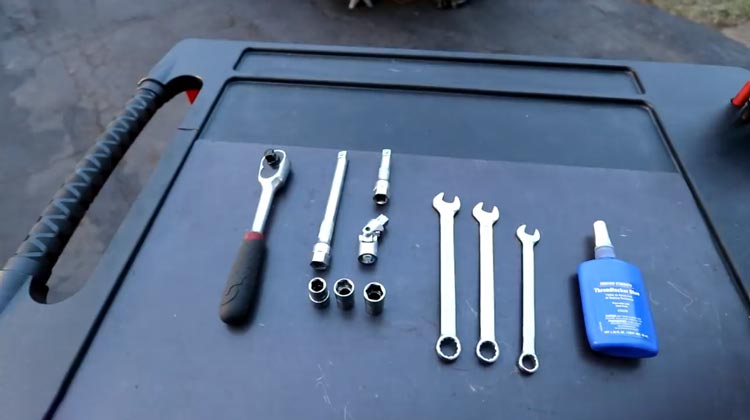
- Socket wrench set
- Screwdriver set
- Replacement starter
- Work gloves
- Safety glasses
Step 1: Disconnect the Battery
Before you begin any work on the car, you need to disconnect the battery. This will prevent you from accidentally electrocuting while working on the starter. To do this, locate the negative terminal of the battery and remove the cable.
Step 2: Locate the Starter
The starter is located on the side of the engine, near the transmission. Once you’ve found it, you’ll see two cables attached to it- the positive and negative cables.
Step 3: Remove the Old Starter
Using your socket wrench, remove the bolts that are holding the starter in place. Be careful not to drop anything while you’re doing this. Once the bolts are removed, you can pull the starter out.
Step 4: Install the New Starter
Now it’s time to install the new starter. First, connect the positive cable to the new starter. Then, connect the negative cable. Finally, bolt the starter into place.
Step 5: Reconnect the Battery
Once you’ve finished installing the new starter, you can reconnect the battery. Make sure that the cables are connected securely before you turn on the car.
If your starter is having problems, it’s important to take action right away. Ignoring the problem will only make it worse and could end up costing you more money in the long run. If you’re not sure what’s wrong with your car, take it to a mechanic so they can diagnose the problem and make the necessary repairs. Replacing a starter is not a difficult task, but it’s best to leave it to a professional if you’re not confident in your abilities.
See this video for more information:
FAQs:
Q: How much does it cost to replace a starter?
A: The cost to replace a starter will vary depending on the make and model of your car. However, you can expect to pay between $200 and $400 for the parts and labor. If you have a warranty, then the cost may be covered.
Q: Does a bad starter affect the battery?
A: Yes, a bad starter can affect the battery. If the starter is not working properly, it can draw too much power from the battery and cause it to die.
Q: What are some common causes of a starter going bad?
A: The most common cause of a starter going bad is simply wear and tear. Over time, the starter will begin to fail and will eventually need to be replaced. Other causes can include a faulty solenoid, bad brushes, or damaged gear.
Q: Can I drive with a bad starter?
A: No, you should not drive with a bad starter. If the starter is not working properly, it can cause the engine to stall. This can be dangerous and could lead to an accident. If your starter is having problems, have it repaired or replaced as soon as possible.
Q: Should I replace the starter myself or take it to a mechanic?
A: Replacing a starter is not a difficult task, but it’s best to leave it to a professional if you’re not confident in your abilities. If you choose to do it yourself, be sure to follow all the instructions carefully and disconnect the battery before beginning any work.
Conclusion:
A faulty starter can cause a lot of problems for your car. If you’re having trouble with your car starting, it’s important to take action right away. Replacing the starter is not a difficult task, but it’s best to leave it to a professional if you’re not confident in your abilities. If you have any questions about replacing a starter, be sure to ask a mechanic. They’ll be able to help you get your car back on the road in no time.
I hope that this guide has been helpful better understanding the symptoms of a faulty starter, the replacement cost, and the solution. If you have any further questions, feel free to reach out to me anytime. I am always happy to help you.
